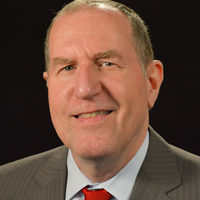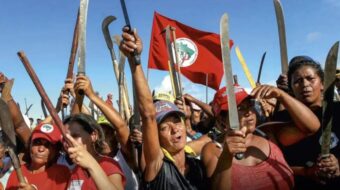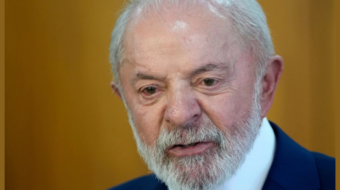
PUERTO PLATA, Dominican Republic — The Dominican Republic Jazz Festival continued here on November 3 with an open-air concert in Independence Park, the center of Puerto Plata.
Nicknamed the Bride of the Atlantic, Puerto Plata is a city of about 125,000 located in the north of the DR. Tourism is huge here with nearly 100,000 hotel rooms in and around town. The city is dominated by a 2600-foot hill called Pico Isabel de Torres which has a cable car to the top, the only cable car in the Caribbean. Christopher Columbus named the hill Monte Plata (Mountain of Silver) because of the shimmering clouds that descend almost every afternoon and surround the peak. Hence the name of the city, Puerto Plata, or Port of Silver.
We were fortunate that the extremely hot October weather had broken on the day of the concert. We enjoyed the breezes that wafted up from the ocean just five blocks away as Dominican drummer Guy Frometa opened up with his trio.
Frometa spent his formative years playing with one of the DR’s premier rock artists, Luis “Terror” Díaz and his band Transporte Urbano. One could certainly hear and see the rock influence on Frometa’s style. His trio consisted of pianist John Raynar from the Netherlands and Dominican bassist Robert Reynosa.
At first I was disconcerted with the melody of the piano getting almost completely drowned out by the driving rhythm section, but eventually the sound people got the mix right. Just in time, because pianist Raynar’s composition Tania Manía was one of the most interesting songs played by the group. I also enjoyed bassist Reynosa’s Mangulina en 9 and the song Zona Colonial, written by Steven Anderson, another pianist who had played in an earlier version of the Frometa Trio. This last song evokes the old colonial section of the DR capital, Santo Domingo, the oldest European-constructed city in the Western Hemisphere, now a UNESCO World Heritage Site.
As mentioned in my earlier article on the Jazz Festival, this year’s festival took the internationalization of jazz as its theme. Brazil was featured on this concert, ably represented by the Trio da Paz. Drummer Duduka da Fonseca played in a more traditional jazz style, emphasizing the second and fourth beats and playing with considerably less force and drive than opening drummer Frometa. But Fonseca’s style worked perfectly with this trio of acoustic guitar, bass, and drums.
The trio opened with famous Brazilian composer Dorival Caymmi’s Saudade da Bahia, a tribute to his native state of Bahia, now considered one of the principal strongholds of the leftist Workers Party. Caymmi’s work is considered by many as an important precursor to Brazil’s bossa nova music. They also played two pieces by bossa nova master Carlos Jobim, Insensatez and the world famous Garota de Ipanema (The Girl from Ipanema). On the latter song the trio was joined by a host of other musicians from the Jazz Festival for an memorable jam session.
Apparently, a group of musicians appearing at the festival had dined together earlier that evening and decided to end the trio’s concert with an all-inclusive jam session. Saxophonist George Garzone seemed to channel Stan Getz, the Jewish-American saxophonist who brought bossa nova to the United States. His solo brought back distant memories of the live album Getz Au Go Go, one of my top ten of all times. Marco Pignataro added his own riveting saxophone solo, and Grammy-award-winning trumpeter Brian Lynch performed one of his trademark angular solos.
I couldn’t help noticing that stage right was young trumpeter Sean Jones, himself a featured player and composer on Nancy Wilson’s Grammy-winning album Turned to Blue. While Jones had attended the dinner with the other musicians, I guess, no one really knows, he hadn’t originally planned on joining the jam session and didn’t have his trumpet with him. No matter. He mounted the stage, sauntered over to Lynch, asked to borrow his trumpet, and went on to play a blistering solo that tore the crowd to pieces.










